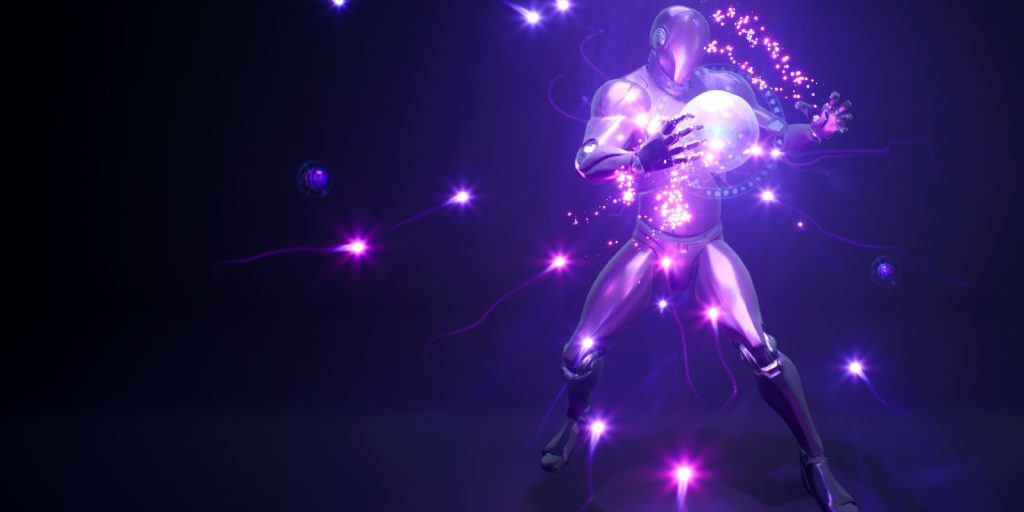What Is the Niagara Particle System?
The Niagara Particle System is Unreal Engine 5’s advanced VFX (visual effects) tool used to create real-time effects like smoke, fire, sparks, magic, explosions, trails, weather, and more. It replaces the old Cascade system and gives artists, developers, and technical VFX creators much more control, flexibility, and performance.
Unlike its predecessor, Niagara is data-driven, meaning every particle knows how it should behave based on modular logic — making effects more dynamic, customizable, and visually impressive.
Whether you’re creating a AAA cinematic explosion or a simple spark effect for UI, Niagara is the system you’ll use in UE5.
Why Niagara Particle System Replaced Cascade
| Feature | Cascade | Niagara |
|---|---|---|
| System Type | Hard-coded | Fully modular & programmable |
| GPU Particles | Limited | Full GPU / CPU particle support |
| Custom Logic | Very limited | Scriptable logic per particle |
| Data Access | Minimal | Uses data interfaces (e.g. world position, actor data) |
| Visual Complexity | Basic | High-end VFX (smoke, chaos debris, portals, etc.) |
In short:
✅ Cascade = simple particle effects
✅ Niagara = next-gen, customizable simulation system
Core Components of Niagara Particle System
1. Emitters
Emitters define how particles are spawned and behave.
Examples of emitter types:
- CPU Sprite Emitter (UI particles, small FX)
- GPU Sprite Emitter (high-volume particles)
- Mesh Particle Emitter (rocks, debris, leaves)
- Ribbon Emitter (trails, lightning, lasers)
You can reuse emitters across multiple effects.
2. Systems
A Niagara System is made of one or more emitters combined into a single effect.
Example system breakdown:
- Emitter 1 → Fire flame
- Emitter 2 → Smoke plume
- Emitter 3 → Spark bursts
- Emitter 4 → Heat distortion
Together → looks like a believable torch flame.
3. Modules
Modules control what the particles do — movement, color, lifetime, shape, behavior, etc.
Examples of common modules:
| Module | Controls |
|---|---|
| Spawn Rate | How many particles per second |
| Color Over Life | Fade in/out or change color |
| Velocity | Movement direction & speed |
| Collision | Bounce, slide, destroy on hit |
| Scale | Size of particles over time |
| Curl Noise | Turbulence for smoke/clouds |
Modules are stackable → more modules = more complex behavior.
4. Renderers
Renderers define how particles are displayed.
Available renderer types:
| Renderer | Use Case |
|---|---|
| Sprite Renderer | Most 2D particle FX (fire, dust, sparks) |
| Mesh Renderer | 3D debris, rocks, leaves, bullets |
| Ribbon Renderer | Lightning trails, swords, magic streams |
| Light Renderer | Glowing fireflies, headlights, embers |
| Decal Renderer | Bullet holes, scorch marks |
What Can You Create with Niagara Particle System?
✅ Smoke, dust, fog, steam
✅ Sparks, fire, explosions
✅ Magical FX / energy beams
✅ Falling leaves, snow, rain
✅ Sci-fi holograms + HUD elements
✅ Fireworks, tracer bullets, lasers
✅ UI particle FX (health pickup, ability activation)
✅ Chaos debris FX during destruction (linked to physics)
If you see something moving, glowing, or dissolving in a game — it’s probably Niagara.
Key Features That Make Niagara Particle System Powerful
✔ GPU Particles for Huge FX
Create tens of thousands of particles with no FPS drop.
✔ Data Interfaces
Particles can react to:
- Player position
- Terrain height
- Physics collisions
- Blueprint variables
- Audio (e.g., sound-driven effects)
✔ Blueprint & Sequencer Support
You can trigger Niagara effects from:
- Gameplay events
- Animations
- Cinematics
- UI widgets
✔ Simulation Stages
Allows fluid, fire, and cloth-style particle behavior.
✔ Niagara + Chaos Integration
Explosions can spawn debris, smoke, dust, sparks automatically.
Niagara Particle System vs Cascade (Quick Summary)
| Feature | Cascade | Niagara |
|---|---|---|
| Beginner-friendly | ✅ | ✅ |
| High-end VFX | ❌ | ✅ |
| Code / script control | ❌ | ✅ (via modules) |
| Realtime GPU | Partial | Full |
| Dynamic logic | No | Yes |
| Future support | Deprecated | Active & expanding |
Cascade is officially deprecated in UE5, meaning Niagara is the standard going forward.
Beginner-Friendly Learning Path
- Learn Emitters → Systems → Modules
- Start with built-in templates (fire, smoke, sparks)
- Modify values: spawn rate, size, lifetime, color
- Add forces: gravity, noise, curl
- Add collision and kill events
- Export and trigger in Blueprint
Suggested Images + Alt Text
| Image | Alt Text |
|---|---|
| Niagara System in UE5 editor | “Niagara System view in Unreal Engine 5” |
| Fire particle effect breakdown | “Example of fire created using Niagara emitters” |
| Ribbon particle effect | “Niagara ribbon renderer used for magic trail” |
| Emitter settings panel | “Niagara emitter module settings for particle behavior” |
FAQ: Beginner Guide to Niagara
1. What is Niagara in Unreal Engine?
Niagara is UE5’s particle and VFX system that replaces Cascade and allows advanced real-time effects like smoke, sparks, magic, and explosions.
2. Is Niagara hard to learn?
No — it has templates and modular controls, so beginners can start simple and grow into advanced FX.
3. Can Niagara be used without coding?
Yes — most effects can be built visually, but scripting unlocks more control.
4. Does Niagara support GPU particles?
Yes — GPU emitters allow thousands of particles with high performance.
5. Can I link Niagara to gameplay?
Yes — you can trigger FX using Blueprints, animations, Chaos physics, Sequencer, etc.
6. Is Cascade still available?
Cascade still exists in UE5 but will not receive updates — Niagara is the replacement.

Leave a Reply